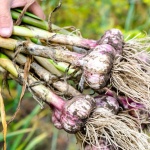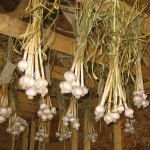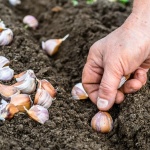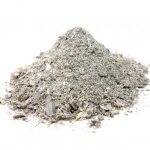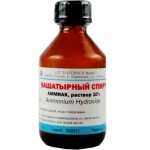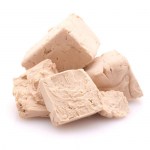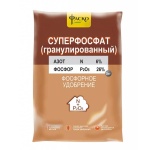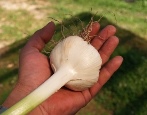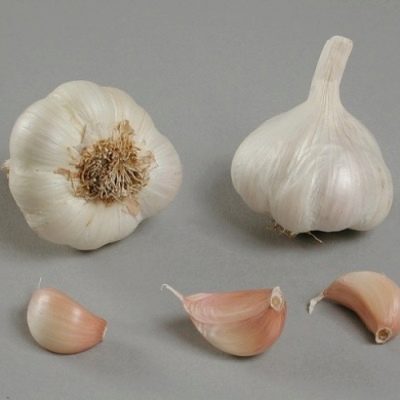
- Authors: France
- Name synonyms: Flavor
- Bulb weight, g: up to 80
- Number of teeth: 15-20
- Dry scales: light
- Color of the pulp: pastel cream
- Taste: semi-sharp
- Growing regions: middle band of Russia
- Ripening terms: mid-season
- Appointment: universal
The spring garlic variety Flavor from French breeders has managed to find many admirers in Russia. It is grown in a one-year cycle and is highly valued for its excellent taste, unpretentiousness, good adaptation to the conditions of temperate climatic zones. The variety is not included in the official State Register, but is well known to amateur vegetable growers.
Description of the variety
The variety is not arrowed, of an old selection, it is grown mainly in the Mediterranean and Eastern Europe. Flavor is appreciated for its good keeping quality and marketability. When purchasing foreign planting material, there is a risk of encountering difficulties in germinating seeds and cloves. It is important to carry out a thorough decontamination before sending it into the ground. The heads are not prone to germination or drying out, retain their appearance and taste throughout the shelf life.
Characteristics of the appearance of plants and bulbs
Bulbs of medium size, weighing up to 80 g. Inside, they are divided into 15-20 small cloves. The juicy scales of this variety of garlic are painted in a pale pink color, have a characteristic shine, the dry outer shell is light, matte. The pulp inside is pastel-creamy, dense and juicy.
The teeth are arranged in two rows, planted tightly to each other. The inner ones are smaller than the outer ones. The diameter of the heads reaches 45-55 mm, the neck is short, rather graceful. The green rosette is dense, the leaves are of medium width, located quite often, slightly curved at the ends. The length of the feathers is about 40 cm, the root system is branched, well developed.
Purpose and taste
A multipurpose variety with an excellent semi-sharp taste. It is used fresh, in marinades and other canned foods. It can be stored successfully for 4-6 months subject to room temperature conditions; in a dry and cold place, it remains edible for up to 2 years.
Maturation
The variety belongs to the mid-season category. Harvesting is carried out in the 3rd decade of August. A sign of reaching full maturity is the lodging of the leaves of the plant, their drying out and discoloration.
Yield
Flavor is a fruitful variety of garlic. About 1.5-2 kg of raw materials ready for processing or storage are collected from 1 m2.
Growing regions
The variety is zoned for planting in the climate of central Russia. In the south, sowing and harvesting dates may shift.
Landing dates
A plant in a temperate climate begins to be planted with cloves no earlier than the end of April, when the soil warms up enough. In the south, this procedure can be carried out starting from the 3rd decade of March.
Growing and care
Garlic in the spring must be sent to the already prepared beds. They are dug up in the fall, bringing in a bucket of humus or compost for each square meter. Acidic soils at the same time are slaked with lime, wood ash or dolomite flour. When planting under the cloves of garlic, holes are made in the ground up to 5 cm deep. It takes about 10 days for a plant to adapt, the development of an autonomous root system.
Garlic of this variety is given in moderation. The first is carried out 3 weeks after germination. The garden bed is watered with a solution of urea or ammonium nitrate.At the stage of mass recruitment, it will be useful to add humated urea, as well as a saline solution to protect against common diseases.
Plants need watering quite often, but without excessive moisture. It is normalized based on the presence of precipitation. It is important to keep the soil moist without stagnant water. After each watering, loosen the row spacing so as not to lose air access to the roots. Humidification is recommended to be strongly reduced in mid-July to avoid head rot.
Top dressing during the period of mass set by the heads is also canceled. In regions with a cold climate, you can cover the beds when sowing with a layer of mulch of 5-10 cm. It is recommended to keep it throughout the entire period of growing the crop.
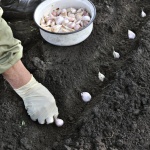
You can plant garlic twice a year. The spring species is best planted in the spring, the winter one is sown before winter. Planting time depends on the region, climatic conditions, varieties, favorable days. It is also necessary to properly prepare planting material and beds.
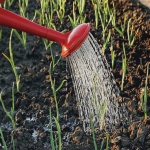
Soil requirements
The best for growing this variety of garlic is medium loamy or light soil, well cultivated, moisture permeable, but sufficiently nutritious. In areas with high groundwater, Flavor is not planted due to the high risk of damping.
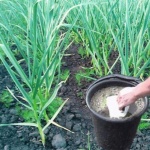
Top dressing of garlic plays a vital role in growing. The use of fertilizers contributes to the rapid growth of heads, an improvement in taste, and an increase in yield. There are many ways to feed him: this can be done with mineral or organic substances, as well as with all kinds of folk remedies.
Required climatic conditions
Flavor is not a hardy garlic. Poorly tolerates frost. Plants are thermophilic, sensitive to moisture levels. During periods of prolonged rains, the development of heads and greenery deteriorates.
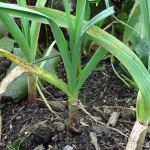
Review overview
Summer residents who managed to test the planting of the Flavor garlic variety on their plots leave conflicting reviews about it. Among the positive aspects, they note the medium-sized size of the teeth, early maturity, and excellent strength of the heads. The variety gives rather high yields, but, according to vegetable growers, it feels best in a moderately warm climate. Subject to agricultural technology, the variety responds well to care, practically does not get sick.
Vegetable growers advise making a bed for this garlic in the sunniest place of the site. You can create an artificial hill if there is a risk of rising groundwater. With the receipt of planting material, amateur vegetable growers also have no problems.
The absence of signs of shooting does not negate other disadvantages of the variety. Buyers complain about the extremely low quality of the commercial seed material, its poor germination. Also, plants are prone to yellowing of the lower leaves, react sharply to inappropriate soil acidity or deficiency of minerals.
